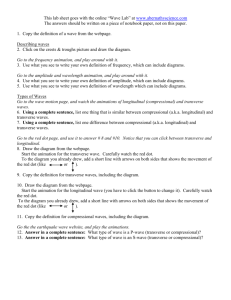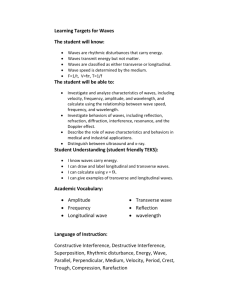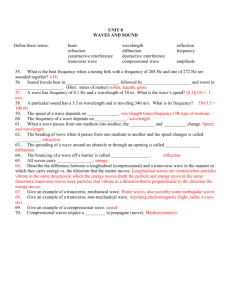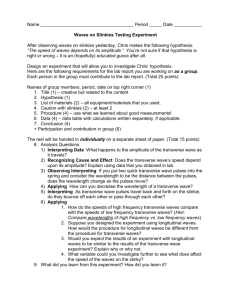Wave Lab Sheet
advertisement
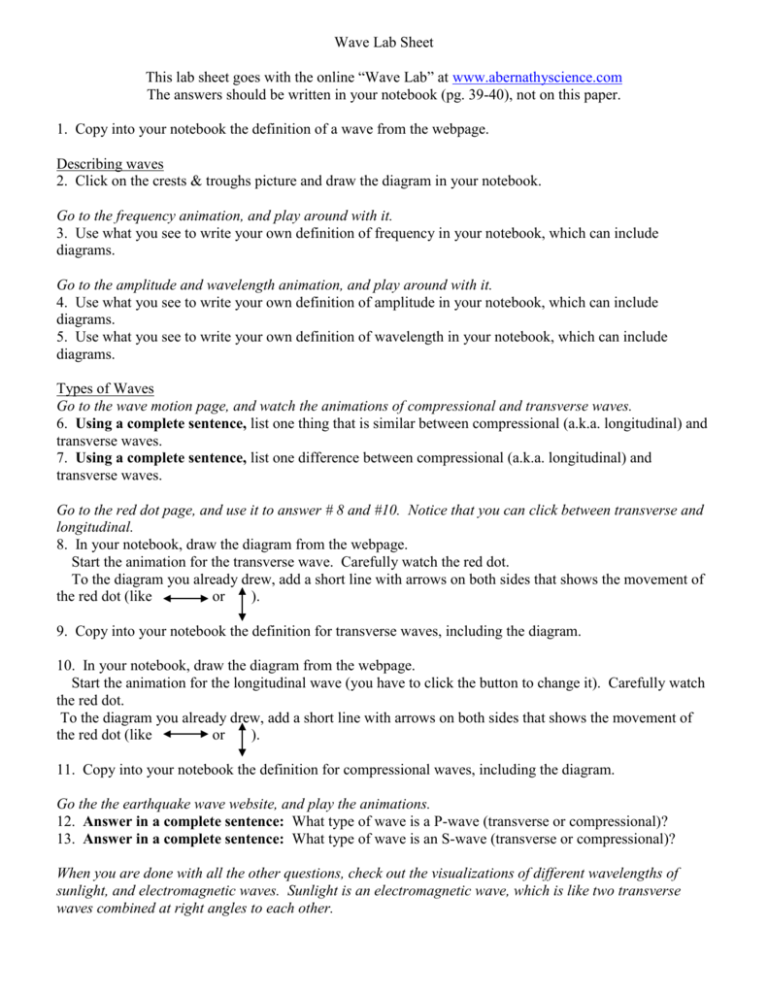
Wave Lab Sheet This lab sheet goes with the online “Wave Lab” at www.abernathyscience.com The answers should be written in your notebook (pg. 39-40), not on this paper. 1. Copy into your notebook the definition of a wave from the webpage. Describing waves 2. Click on the crests & troughs picture and draw the diagram in your notebook. Go to the frequency animation, and play around with it. 3. Use what you see to write your own definition of frequency in your notebook, which can include diagrams. Go to the amplitude and wavelength animation, and play around with it. 4. Use what you see to write your own definition of amplitude in your notebook, which can include diagrams. 5. Use what you see to write your own definition of wavelength in your notebook, which can include diagrams. Types of Waves Go to the wave motion page, and watch the animations of compressional and transverse waves. 6. Using a complete sentence, list one thing that is similar between compressional (a.k.a. longitudinal) and transverse waves. 7. Using a complete sentence, list one difference between compressional (a.k.a. longitudinal) and transverse waves. Go to the red dot page, and use it to answer # 8 and #10. Notice that you can click between transverse and longitudinal. 8. In your notebook, draw the diagram from the webpage. Start the animation for the transverse wave. Carefully watch the red dot. To the diagram you already drew, add a short line with arrows on both sides that shows the movement of the red dot (like or ). 9. Copy into your notebook the definition for transverse waves, including the diagram. 10. In your notebook, draw the diagram from the webpage. Start the animation for the longitudinal wave (you have to click the button to change it). Carefully watch the red dot. To the diagram you already drew, add a short line with arrows on both sides that shows the movement of the red dot (like or ). 11. Copy into your notebook the definition for compressional waves, including the diagram. Go the the earthquake wave website, and play the animations. 12. Answer in a complete sentence: What type of wave is a P-wave (transverse or compressional)? 13. Answer in a complete sentence: What type of wave is an S-wave (transverse or compressional)? When you are done with all the other questions, check out the visualizations of different wavelengths of sunlight, and electromagnetic waves. Sunlight is an electromagnetic wave, which is like two transverse waves combined at right angles to each other.



